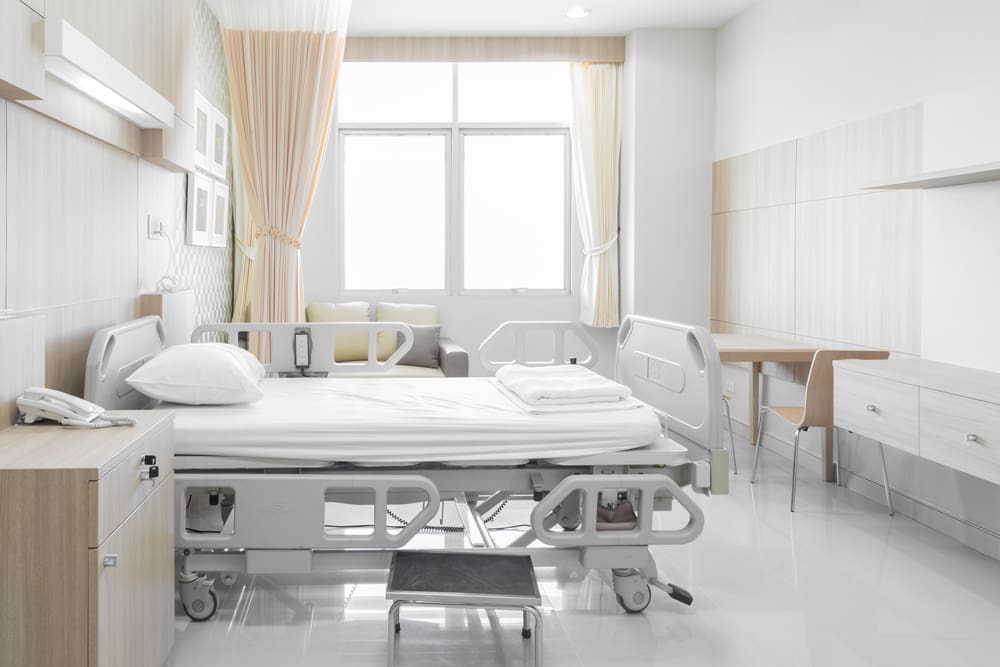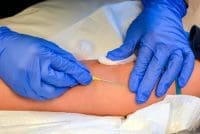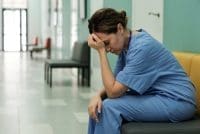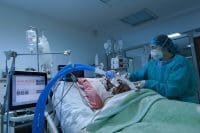Imagine being stuck in a hospital room day after day, for as many as 21 days, not seeing or experiencing a change of scenery except for a stretcher ride to the radiology department. This is often the case for individuals suffering a subarachnoid hemorrhage (SAH) from an aneurysm rupture.
At the hospital where I work, we found that this difficult experience can be eased through brief excursions outdoors. I’d like to share our experience with you, so you can consider implementing something similar in your organization.
The challenge
An aneurysm occurs when part of an artery wall weakens, allowing it to widen abnormally or balloon out. When an aneurysm leaks or ruptures blood enters the subarachnoid space, which is the space below the arachnoid and above the pia, or covering of brain tissue. This is diagnosed as an SAH. Degradation products of blood can cause vessel and muscle damage resulting in severe narrowing or blockage of cerebral arteries. This is referred to as vasospasm, which can be benign or devastating.
Vasospasm may be manifested angiographically, clinically, or both. Vasospasm, or narrowing of the blood vessel, occurs 7-10 days after the hemorrhage, and spontaneously resolves after 21 days. Interventions to prevent and treat vasospasm usually require intensive care to administer nimodipine, high dose fluids for hypervolemia, and medications to increase blood pressure, as well as daily transcranial Doppler measurements.
Therefore, patients are monitored closely with frequent neurological assessments, vital signs, and sometimes, intracranial pressure monitoring with extracranial venous drainage (EVD). The frequency and intensity of care require admission to an intensive care unit (ICU), often for 14-21 days
Patients can get anxious and depressed being “stuck” in the same room with the same surroundings and four walls of the ICU for weeks. Investigators have found that patients 2 to 4 years post SAH experienced anxiety, depression, and fatigue. Therefore, it’s important to lessen anxiety and depression even during hospitalization.
Value of the outdoors
A natural outdoor environment is often referred to as a green space, which is defined in the dictionary as an area of grass, trees, or other vegetation set apart for recreational or aesthetic purposes in an otherwise urban environment. Natural outside environments can be green, such as parks with trees and grasses, or blue, such as water, beaches with ocean waters, or lakes. Authors have summarized the literature on the benefits of natural outdoor environments to include such positive effects on physical health, well-being, recovery from illness, psychological well-being, anxiety, attention, mood, and pain.
Taking action
We decided to take action to change SAH patients being stuck in their hospital room. A pilot study of 10 patients using a mixed methods (quantitative and qualitative) design was undertaken following approval from the institutional review board.
We first assessed a patient for stability and appropriateness for transport, then asked his or her surgeon for permission to ask the patient to participate in the study. Informed consent was obtained by one of the investigators. Staff nurses prepared and escorted the patient outside the hospital, with the length of time based on the patient’s condition and request. The frequency of trips outside was also determined by the patient’s condition and request, and outside weather conditions.
Patients were asked about their anxiety, pain, and general state of health before and after experiencing the natural outdoor environment. One open-ended question was asked after the intervention: Can you tell me about your experience leaving your room in neuro ICU and going outside in the natural environment?
Patient benefits
All but two patients went outside once. In the most cases anxiety and pain (headache) was less after the experience. Fifty percent of the time patients also reported better overall health. Patients verbally stated that they had a wonderful experience and wished they could have gone outside sooner. Additionally, they wanted to go out again, every day if they could. Patients were excited to have different surroundings but going outside sometimes required hats and sunglasses due to the brightness, which could aggravate the patient’s headache.
Nurses noted that going outside resulted in patients feeling tired, which was not necessarily a negative. They acknowledged that it takes a lot of time (over 1 hour) and effort to prepare a patient to go outside for about 20-30 minutes. A final thought from one of the nurses was “It may be that just being ‘outside the room’ is enough.”
Susan B. Fowler works in the department of neurology at Orlando Health. She would like to acknowledge members of the study team: S. Feliz Velbis, RN; Crystal Ruppert, RN; Dara Borenstein, RN; Megan Diaz, RN; and Marshall Cress, MD.
Selected references
American Heart Association. What is an aneurysm? 2017. heart.org/HEARTORG/Conditions/VascularHealth/AorticAneurysm/What-is-an-Aneurysm_UCM_454435_Article.jsp#.Wgx3YlKoupo
Connolly ES, Rabinstein AA, Carhuapoma JR, et al. (Guidelines for the management of aneurysmal subarachnoid hemorrhage- a guideline for healthcare professionals rrom the American Heart Association/American Stroke Association. Stroke. 2012;43:1711-1737.
Oxforddictionaries. Green space. 2017. https://en.oxforddictionaries.com/definition/green_space
Rappe E, Kivela S-L, Rita H. Visiting outdoor green environments positively impacts self-rated health among older people in long-term care. HortTechnology.2006;16(1):55-59.
Triguero-Mas M, Dadvand P, Cirach M, et al. Natural outdoor environments and mental and physical health: Relationships and mechanisms. Environment International.2015;77:35–41.
Visser-Meily JM, Rhebergen ML, Rinkel GJ, et al. Long-term health-related quality of life after aneurysmal subarachnoid hemorrhage: relationship with psychological symptoms and personality characteristics. Stroke. 2009;40:1526-1529.


















